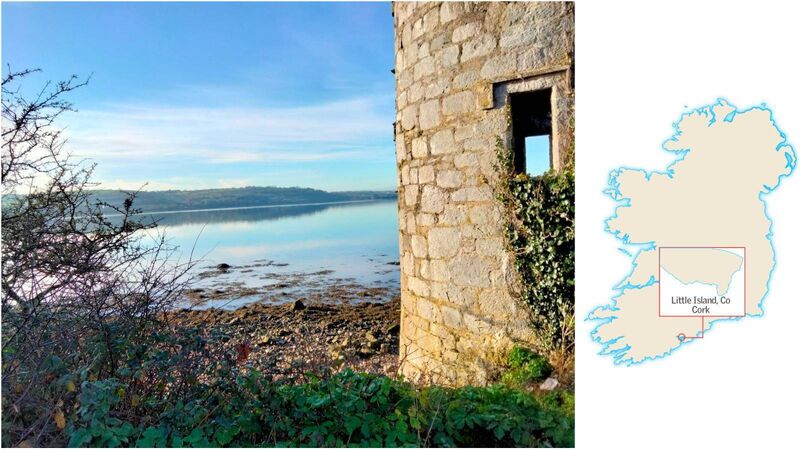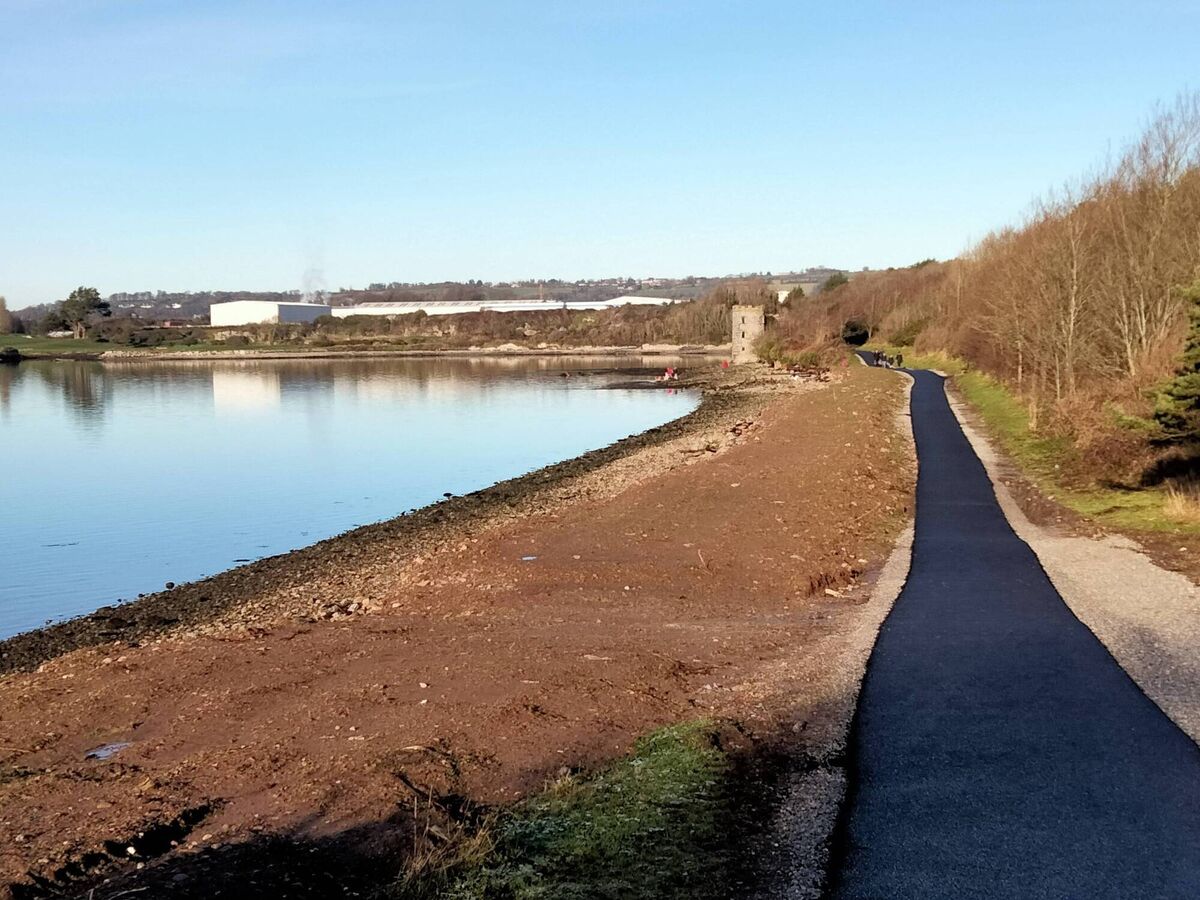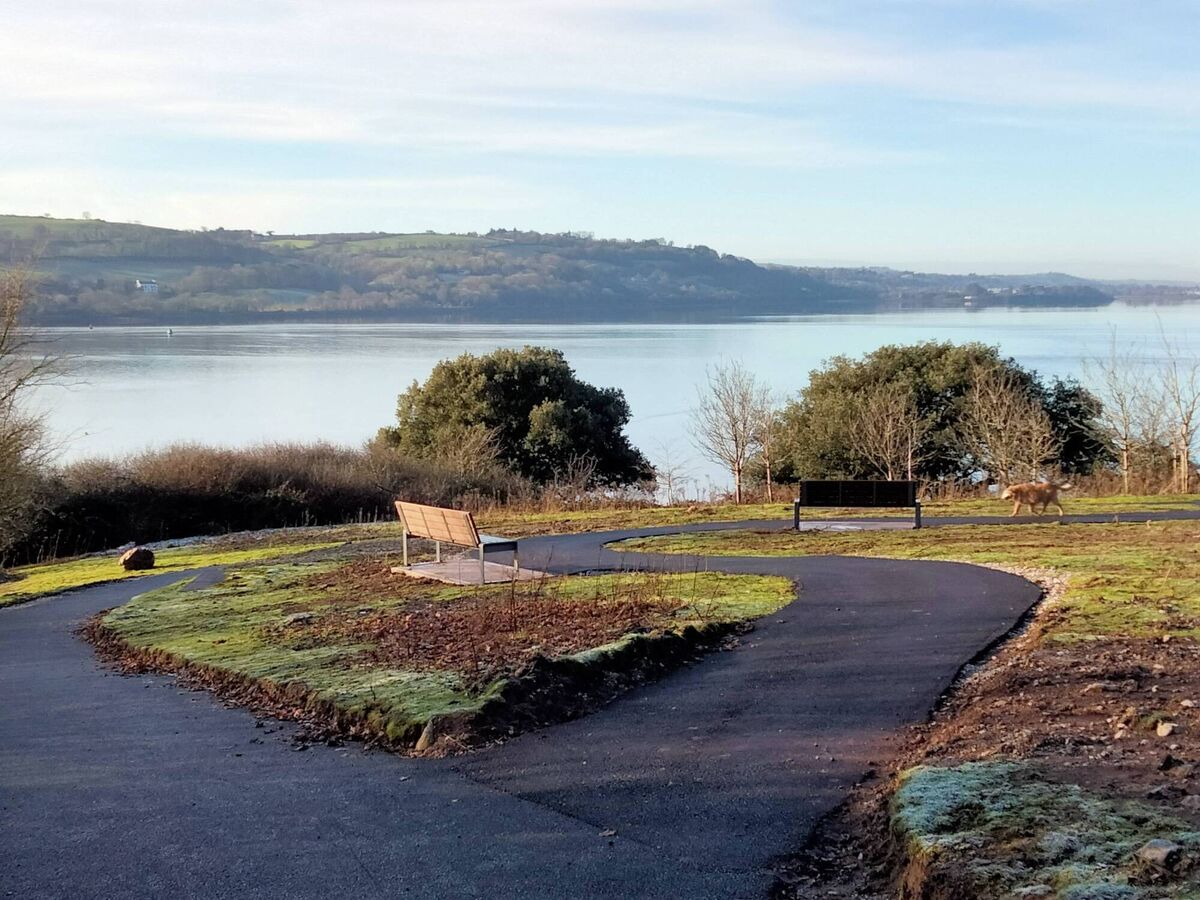Middens, fulacht fiadh and coastal walks at Cork's Little Island

Carrigrennan Mill, Little Island in Cork Harbour
The year is 7,000 BC. Imagine you are a hunter gatherer in the mesolithic period in Ireland and you make landfall in your dugout canoe at a wooded island in a huge harbour. The climate is benign enough to allow a sheltered camp to be established — and with ample fishing and smalls animals to hunt in the woods, food supply will not be an issue. After a time you notice other settlements on other islands in the harbour: nearby at Brown Island, Harper’s Island and Great Island.
This type of scenario is attested by the discovery more than 100 years ago of several middens — basically giant refuse tips where the camp occupants discarded oyster shells, primarily. It is unlikely that these hunter-gatherers developed permanent settlements as no evidence has been found that they did.
These were the first people to live on what we now know as Little Island. It was thousands of years before recorded evidence of people actually living on the island emerged as evidenced by Bronze Age fulacht fiadh (cooking sites) and corn kilns from the Medieval period.
The historic evidence that marks out Little Island as almost unique is the remains of two tidal mills dating from the early medieval period. While tidal mills occur in several sites around the country most are of the horizontal type, whereas Little Island had a horizontal and a vertical mill. They are the earliest known type in Europe or Asia according to industrial archaeologist, Colin Rynne. “These tide mills enhance the development of agriculture, facilitated new trade and, consequently, influenced the growth of human settlements. They were common on the Atlantic coasts of Europe and the earliest-examples of water-powered mills in Ireland were of this type.”
Little Island lies to the north of Cork Harbour and was once cut off from the mainland by a channel of the River Lee which encircled it. The Island retained its island status up to an early 19th-century infill project which saw it joined to the mainland. However, its island geography for the preceding thousands of years more than merit its inclusion here.
It was joined to the mainland at the parish of Caherlag in 1837 by a “handsome causeway of hewn stone and a metal spring bridge” according to the Topographical Dictionary of Ireland by Samuel Lewis. The process of integration with the mainland was continued by the Reverend R Bury who instigated a scheme of works to reclaim about 20 acres of slobland. Lewis noted the presence of several “handsome seats” including the latter’s residence; Sun Lodge, the home of one Charles Oliver MP; and Rockfarm of a J Cantillon.

Despite its present-day vast industrial landscape there are still some beautiful views and lovely places to be found on this (anything but little) island, such as a coastal walk which begins at Clashavodig on the south of the island. An old village of the same name, now long since gone, had a population of 381 people in 1831. The villagers worked mainly in farming and quarrying, according to a very informative information board erected by the Little Island Heritage and History Group.
The board lists many important sites including Carrigrennan mansion house and kiln; a limestone structure known as the tower; and the oyster bank which had a flourishing trade in the mollusc in the mid-19th century and the quality of which matched that of Dublin’s today. Further west are the remains of Wallingstown Castle and the site of the destroyed 18th-century Little Island House.

Little Island owes its name to its huge neighbour, Great Island, on which the cathedral town of Cobh looks out to the mouth of Cork Harbour. The earliest recorded name for Little Island is from a papal entry in 1302: Cellescoplappan. Also at this time it was referred to as De Insula meaning ‘of the island’ in Latin. By 1489 it was Inysmacneyll; 1582 insula parva alias Inishvicneyl; and Little Island by 1614. The official modern Irish name for Little Island is Lime Ratha or An tOileán Beag.
: Not too hard! Take the N8 east of Cork City for 8km.







